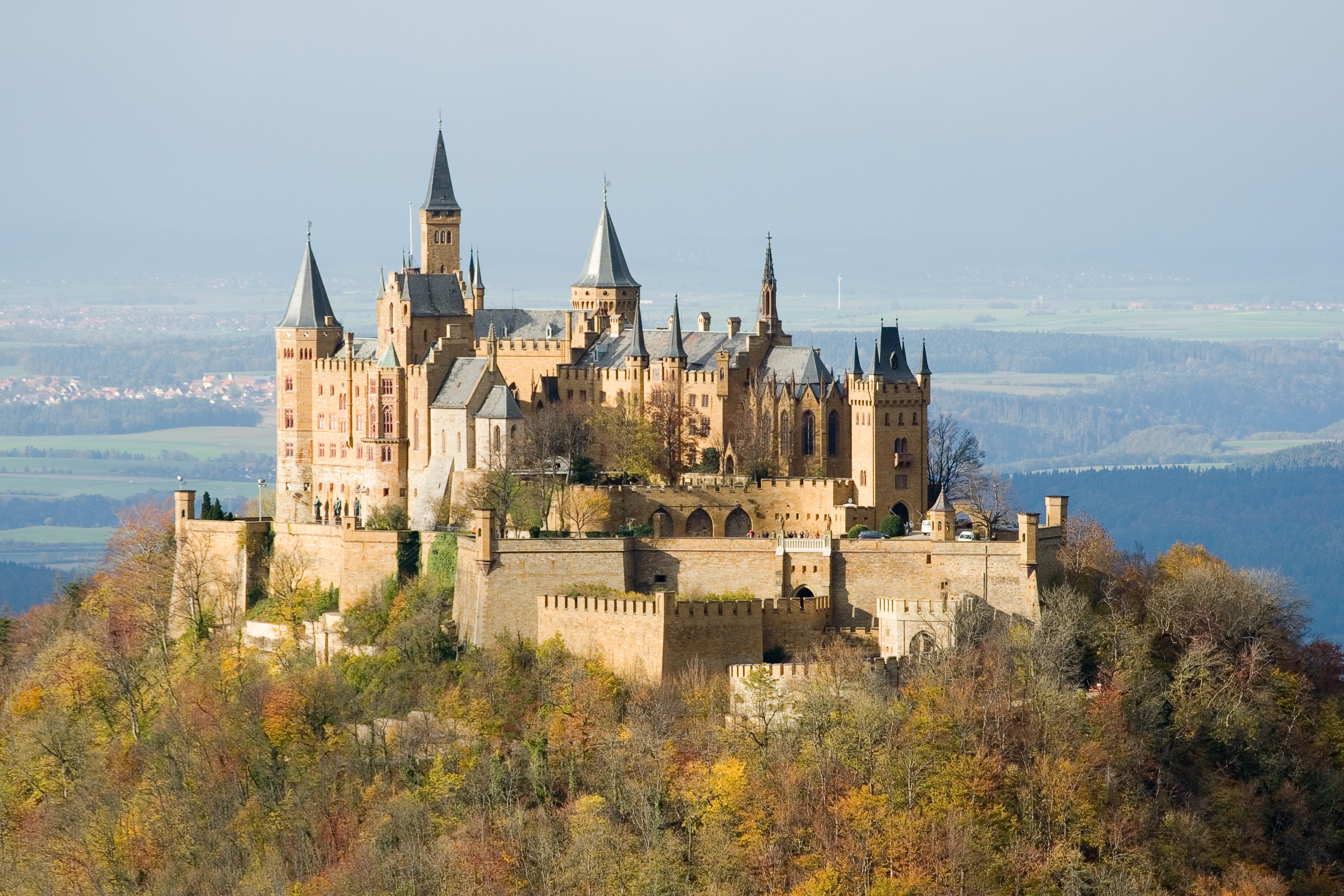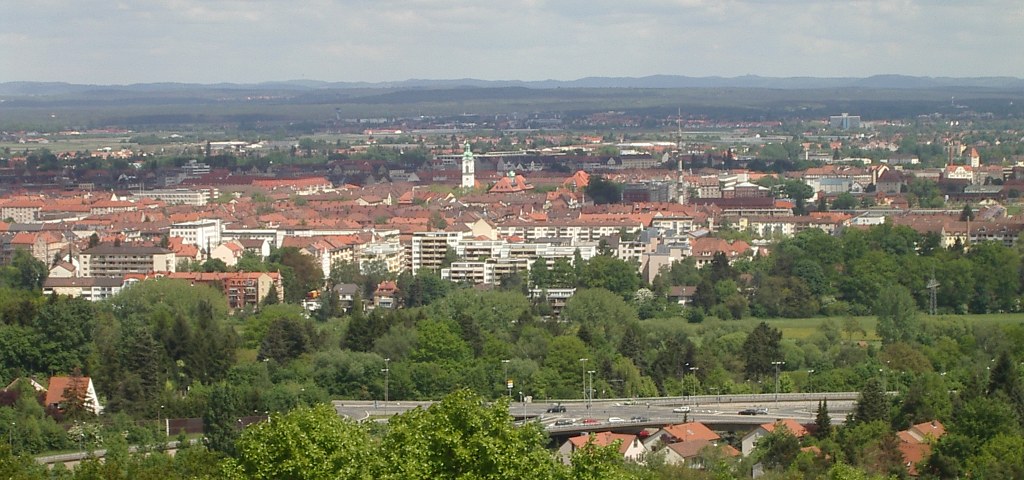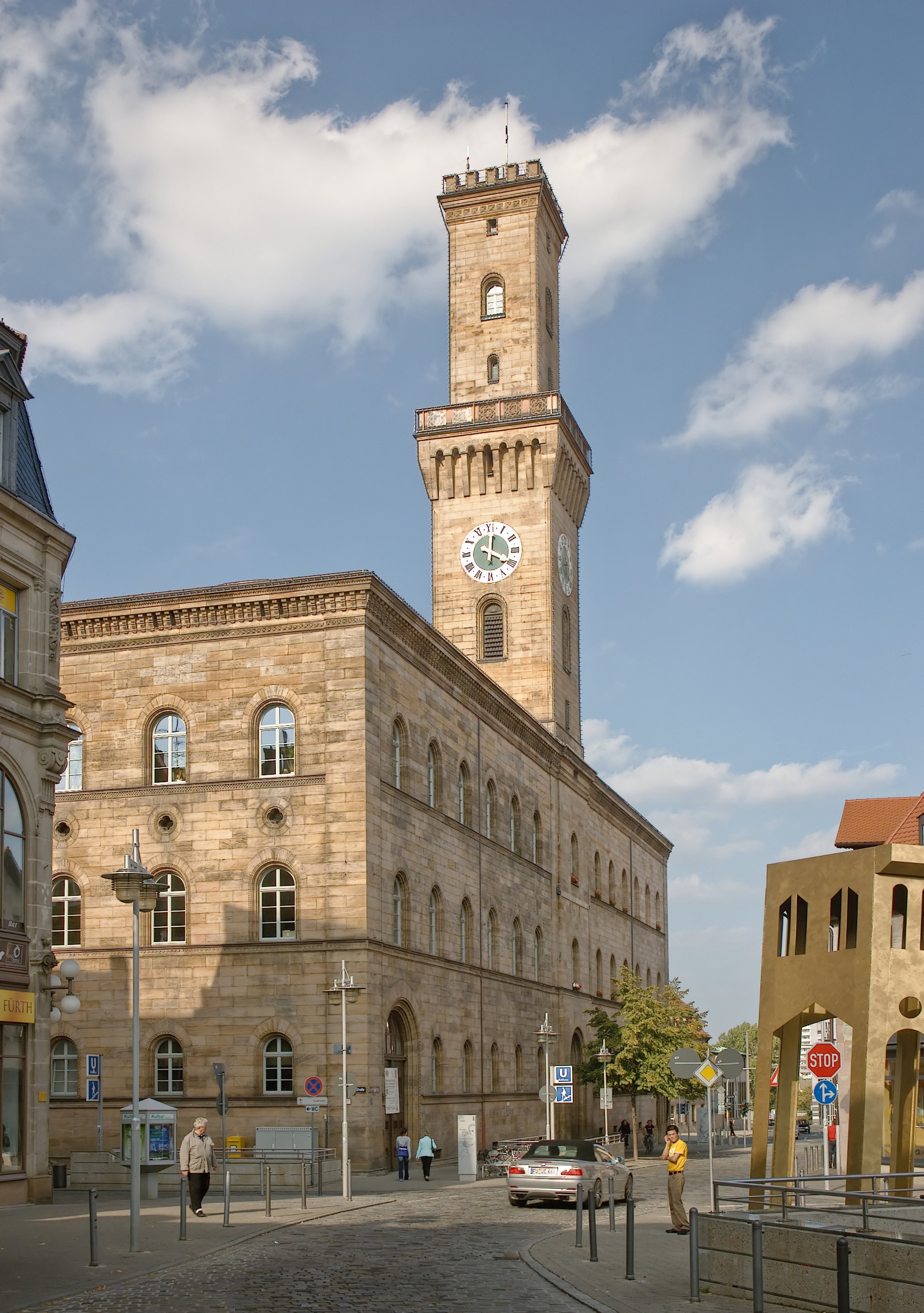|
Cadolzburg
Cadolzburg (outdated also ''Kadolzburg'' , colloquially pronounced "Kalschbuʳch" or "Sporch" in the local dialect) is a municipality in the Middle Franconian Fürth (district), district of Fürth, in Bavaria, Germany. It is situated west of Fürth. Its name derives from its central castle, first being mentioned in the year 1157. Geography The topography varies significantly in its height. Neighborhood Neighboring Municipalities are: (beginning in the north then going clockwise) * Veitsbronn * Seukendorf * Fürth * Zirndorf * Ammerndorf * Großhabersdorf * Langenzenn, Langenzen Districts Cadolzburg consists of the city itself and 15 farther districts: History Middle Ages The place was first mentioned in 1157 when the reeve of Kadolzburg, Helmericus de Kadoldesburc, agreed on a territorial exchange between the Bishopric of Würzburg, diocese of Würzburg the Heilsbronn Abbey. So the name derives from ''Burg des Kadold'' meaning "Kadold's castle". If the castle had ... [...More Info...] [...Related Items...] OR: [Wikipedia] [Google] [Baidu] |
Frederick I, Elector Of Brandenburg
Frederick (Middle High German: ''Friderich'', Standard German: ''Friedrich''; 21 September 1371 – 20 September 1440) was the last Burgrave of Nuremberg from 1397 to 1427 (as Frederick VI), Margrave of Brandenburg-Ansbach from 1398, Margrave of Brandenburg-Kulmbach from 1420, and Elector of Brandenburg (as Frederick I) from 1415 until his death. He became the first member of the House of Hohenzollern to rule the Margraviate of Brandenburg. Biography Frederick was born in Nuremberg, the second-born son of Burgrave Frederick V (1333–1398) and the Wettin princess Elisabeth of Meissen. He entered early into the service of his brother-in-law, the Habsburg duke Albert III of Austria. After Albert's death in 1395, he fought on the side of the Luxembourg king Sigismund of Hungary against invading Ottoman forces. He and his elder brother John, husband of Sigismund's sister Margaret of Bohemia, fought in the 1396 Battle of Nicopolis where they suffered a disastrous ... [...More Info...] [...Related Items...] OR: [Wikipedia] [Google] [Baidu] |
Burgraviate Of Nuremberg
The Burgraviate of Nuremberg () was a state of the Holy Roman Empire from the early 12th to the late 15th centuries. As a burgraviate, it was a county seated in the town of Nuremberg; almost two centuries passed before the burgraviate lost power over the city, which became independent from 1219. Eventually, the burgraviate was partitioned to form Brandenburg-Ansbach and Brandenburg-Bayreuth. History Nuremberg was probably founded around the turn of the 11th century, according to the first documentary mention of the city in 1050, as the location of an Imperial castle between the East Franks and the Bavarian March of the Nordgau."Nürnberg, Reichsstadt: Politische und soziale Entwicklung" [...More Info...] [...Related Items...] OR: [Wikipedia] [Google] [Baidu] |
Fürth (district)
Fürth is a ''Landkreis'' (district) in Bavaria, Germany. It is bounded by (from the east and clockwise) the cities of Fürth and Nuremberg, and by the districts of Roth, Ansbach, Neustadt (Aisch)-Bad Windsheim and Erlangen-Höchstadt. History In the 13th and most of the 14th century the region was a regional centre of the Hohenzollern state. The Cadolzburg (a castle west of Nuremberg) was the seat of the local rulers. The present district was established in 1972. In 2003 the administrative seat was moved from Fürth to Zirndorf. (Nonetheless, Fürth remains the official capital of the district.) Geography The district is occupied by the western Nuremberg metropolitan area. Politics The district is part of the Fürth constituency for elections to the Bundestag The Bundestag (, "Federal Diet (assembly), Diet") is the lower house of the Germany, German Federalism in Germany, federal parliament. It is the only constitutional body of the federation directly elec ... [...More Info...] [...Related Items...] OR: [Wikipedia] [Google] [Baidu] |
House Of Hohenzollern
The House of Hohenzollern (, ; , ; ) is a formerly royal (and from 1871 to 1918, imperial) German dynasty whose members were variously princes, Prince-elector, electors, kings and emperors of Hohenzollern Castle, Hohenzollern, Margraviate of Brandenburg, Brandenburg, Prussia, the German Empire, and Kingdom of Romania, Romania. The family came from the area around the town of Hechingen in Swabia during the late 11th century and took their name from Hohenzollern Castle. The first ancestors of the Hohenzollerns were mentioned in 1061. The Hohenzollern family split into two branches, the Catholic Church, Catholic Swabian branch and the Protestantism, Protestant Burgraviate of Nuremberg#List of burgraves, Franconian branch,''Genealogisches Handbuch des Adels, Fürstliche Häuser'' XIX. "Haus Hohenzollern". C.A. Starke Verlag, 2011, pp. 30–33. . which ruled the Burgraviate of Nuremberg and later became the Brandenburg-Prussian branch. The Swabian branch ruled the principalities of Hoh ... [...More Info...] [...Related Items...] OR: [Wikipedia] [Google] [Baidu] |
Langenzenn
Langenzenn is a town in the Fürth (district), district of Fürth, in Bavaria, Germany. It is situated 15 km west of Fürth. The town lies on the river Zenn (river), Zenn and has a population of 10,339 (31 December 2012). Geography It belongs to the district of Fürth near Nürnberg and lies in the . Neighbouring Towns: *Wilhermsdorf (6.3 km) *Großhabersdorf *Cadolzburg (7.36 km) *Veitsbronn (6.29 km) *Puschendorf (4.41 km) *Emskirchen (8.19 km) *Hagenbüchach (4.41 km) History First possible historic mention in 903 by king Louis the Child, Ludwig IV as 'Zenna'. It is not proven whether 'Zenna' means Langenzenn here or the abandoned village Zennhausen near Neuhof an der Zenn. The first evident mention is in 954 when King Otto I, Holy Roman Emperor, Otto I held an important meeting with the German nobles in Langenzenn to reunite them. Langenzenn was granted the rights and privileges of a town in 1360. Around that time the moved from Cado ... [...More Info...] [...Related Items...] OR: [Wikipedia] [Google] [Baidu] |
Zirndorf
Zirndorf () is a town, which is part of the district of Fürth. It is located in northern Bavaria, Germany in the Regierungsbezirk of Middle Franconia. Neighbouring municipalities The following towns and municipalities share borders with Zirndorf; they are listed in clockwise order, starting in the north: * Fürth * Oberasbach * Stein * Roßtal * Ammerndorf * Cadolzburg History The first mention of the town occurs in a document dated 9 September 1297. The town was virtually destroyed during the Thirty Years' War, though the brewing industry established in the late seventeenth century helped in its recovery. In the mid-nineteenth century, the toy industry contributed to the town’s industrial development, and remains important today. Pinder Barracks In 1935 the city of Zirndorf applied to the German Reich Administration to have a caserne built here. The application was approved, with the condition of Reichsmarschall Hermann Göring, that construction must be in the Fra ... [...More Info...] [...Related Items...] OR: [Wikipedia] [Google] [Baidu] |
Mauterndorf
Mauterndorf (Southern Bavarian: ''Mautndorf'') is a market town of the Tamsweg District in the Austrian state of Salzburg (state), Salzburg. The municipality also comprises the Katastralgemeinden ''Faningberg, Neuseß'' and ''Steindorf''. Geography It is located in the centre of the Salzburg Lungau region, in the valley of the Southern Taurach River, a tributary of the Mur (river), Mur rising at the Radstädter Tauern Pass. In the north, the Niedere Tauern range forms a part of the main chain of the Alps. In the south, the Katschberg Roads via Sankt Michael im Lungau, Sankt Michael leads to the Tauern Autobahn and the Katschberg Pass, crossing the Hohe Tauern range towards Carinthia (state), Carinthia. History The settlement arose from a Roman ''castra'' in the Noricum province, at the mountain road from Teurnia to the Radstädter Tauern Pass and Salzburg, Iuvavum (Salzburg). Mauterndorf was first mentioned in a 1002 deed, Burg Mauterndorf, Mauterndorf Castle was acquired by the A ... [...More Info...] [...Related Items...] OR: [Wikipedia] [Google] [Baidu] |
Fürth
Fürth (; East Franconian German, East Franconian: ; ) is a List of cities and towns in Germany, city in northern Bavaria, Germany, in the administrative division (''Regierungsbezirk'') of Middle Franconia. It is the Franconia#Towns and cities, second-largest city in Franconia and now contiguous with the larger city of Nuremberg, the centres of the two cities being only apart. The city forms a continuous conurbation with the neighbouring cities of Nuremberg, Erlangen and Schwabach, which is the heart of an urban area region with around 1.4 million inhabitants, while the larger Nuremberg Metropolitan Region has a population of approximately 3.6 million. Fürth celebrated its thousand-year anniversary in 2007, its first mention being on 1 November 1007. Geography The historic centre of the town is to the east and south of the rivers Rednitz and Pegnitz River, Pegnitz, which join to form the Regnitz to the northwest of the Old Town. To the west of the town, on the far side ... [...More Info...] [...Related Items...] OR: [Wikipedia] [Google] [Baidu] |
Seukendorf
Seukendorf is a municipality in the district of Fürth in Bavaria in Germany Germany, officially the Federal Republic of Germany, is a country in Central Europe. It lies between the Baltic Sea and the North Sea to the north and the Alps to the south. Its sixteen States of Germany, constituent states have a total popu .... References Fürth (district) {{Fürthdistrict-geo-stub ... [...More Info...] [...Related Items...] OR: [Wikipedia] [Google] [Baidu] |
Franconian Circle
The Franconian Circle () was an Imperial Circle established in 1500 in the centre of the Holy Roman Empire. It comprised the eastern part of the former Franconian stem duchy—roughly corresponding with the present-day Bavarian ''Regierungsbezirke'' of Upper Franconia, Upper, Middle Franconia, Middle and Lower Franconia—while western Rhenish Franconia belonged to the Upper Rhenish Circle. The title of a "Duke of Franconia" was claimed by the Bishopric of Würzburg, Würzburg bishops. Emergence and location As early as the Middle Ages, Franconia had very close links to king and empire. Located between the Rhenish territories of the empire and the Kingdom of Bohemia, Franconia, which included the former Duchy of Franconia, had been one of the centres of empire for a long time. By order of Emperor Louis IV (HRR), Louis of Bavaria, Bamberg, Würzburg, Eichstätt and Fulda with the Hohenzollern Burgraves of Nuremberg, Counts of Henneberg, the Castell and Hohenlohe, the three ep ... [...More Info...] [...Related Items...] OR: [Wikipedia] [Google] [Baidu] |
Le Palais-sur-Vienne
Le Palais-sur-Vienne (; ) is a commune in the Haute-Vienne department in the Nouvelle-Aquitaine region in west-central France France, officially the French Republic, is a country located primarily in Western Europe. Overseas France, Its overseas regions and territories include French Guiana in South America, Saint Pierre and Miquelon in the Atlantic Ocean#North Atlan .... Population Inhabitants are known as ''Palaisiens'' in French. See also * Communes of the Haute-Vienne department References Communes of Haute-Vienne {{HauteVienne-geo-stub ... [...More Info...] [...Related Items...] OR: [Wikipedia] [Google] [Baidu] |
Landrat
The Landrat () is the chief administrative officer of a German ''Landkreis'' or ''Kreis'' and thus the highest municipal official. In most states they are also the lower state administrative authority (so-called "dual position" of the Landrat). They represent the ''Kreis'' externally and are elected in most States of Germany directly. History The title ' was adopted for the lowest administrative authorities in individual small German states, namely in Saxe-Altenburg, Saxe-Coburg and Gotha, Saxe-Meiningen, as well as in the Imperial County of Reuss and in the Schwarzburg principalities (Schwarzburg-Rudolstadt and Schwarzburg-Sondershausen). In the Kingdom of Bavaria, where with their introduction in right-wing districts since 1828 Landräte elected, the assembly appointed to represent a was called . In Mecklenburg, the eight representatives of the native or received nobility in the ständisches Direktorium were called Landrats. Two Landrats belonged to the ' of the Knight ... [...More Info...] [...Related Items...] OR: [Wikipedia] [Google] [Baidu] |







